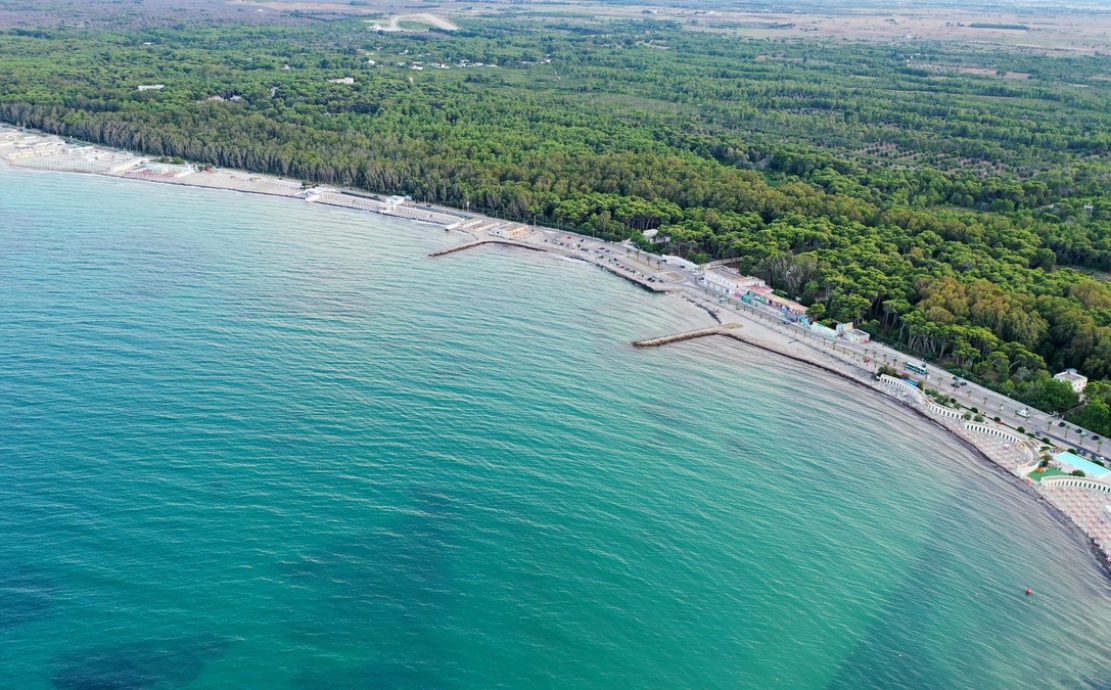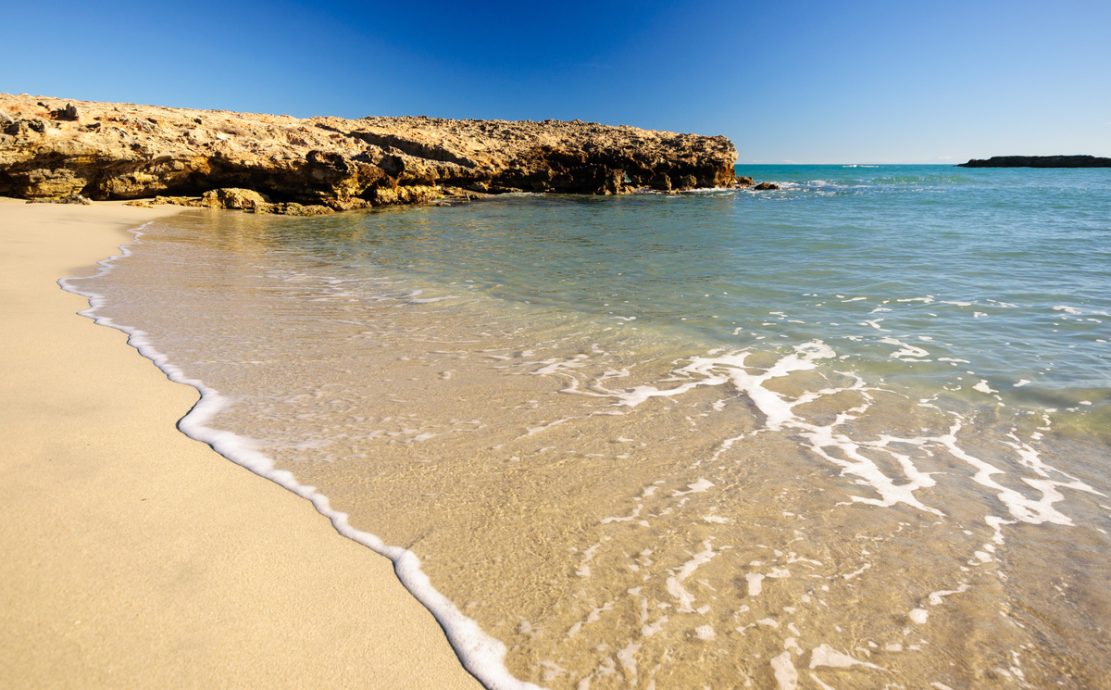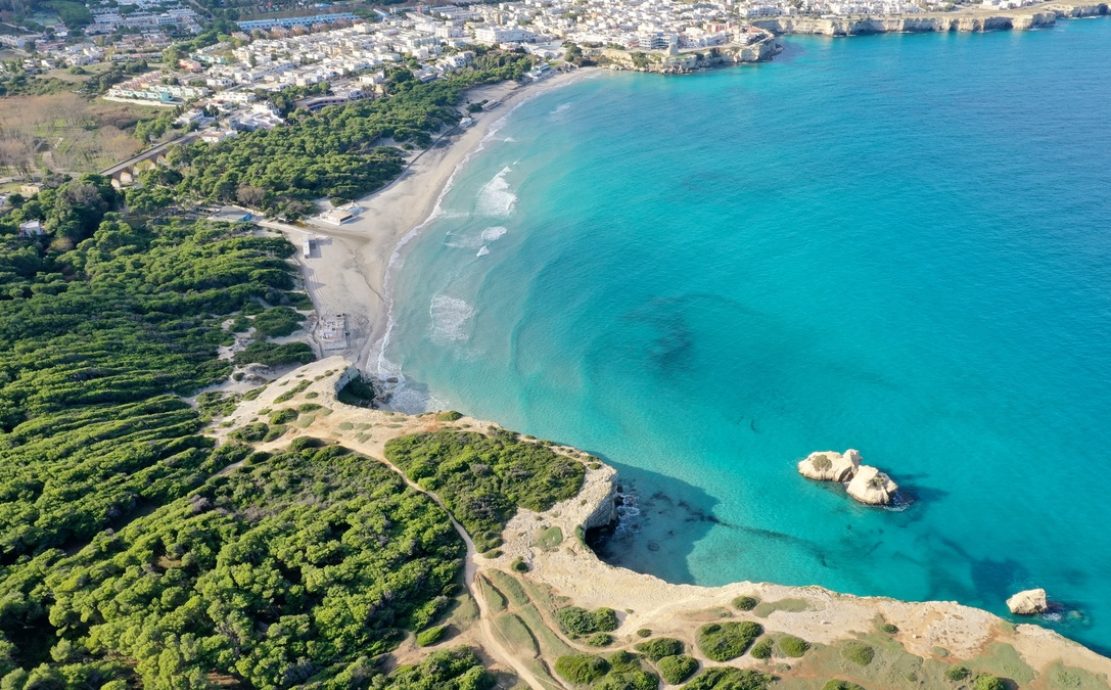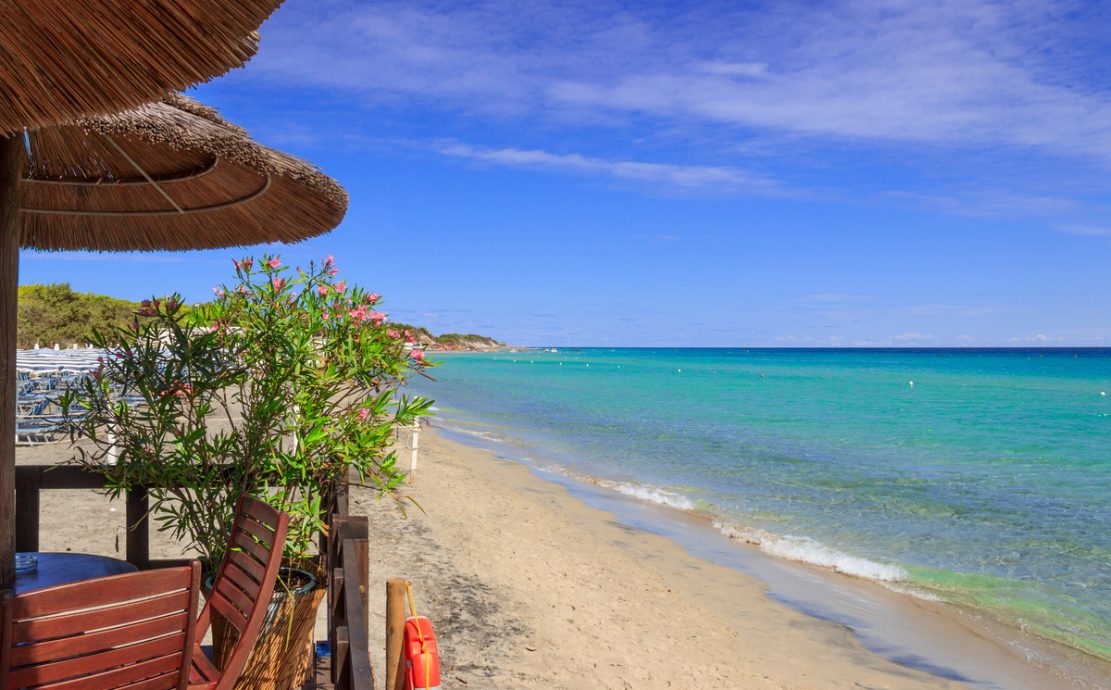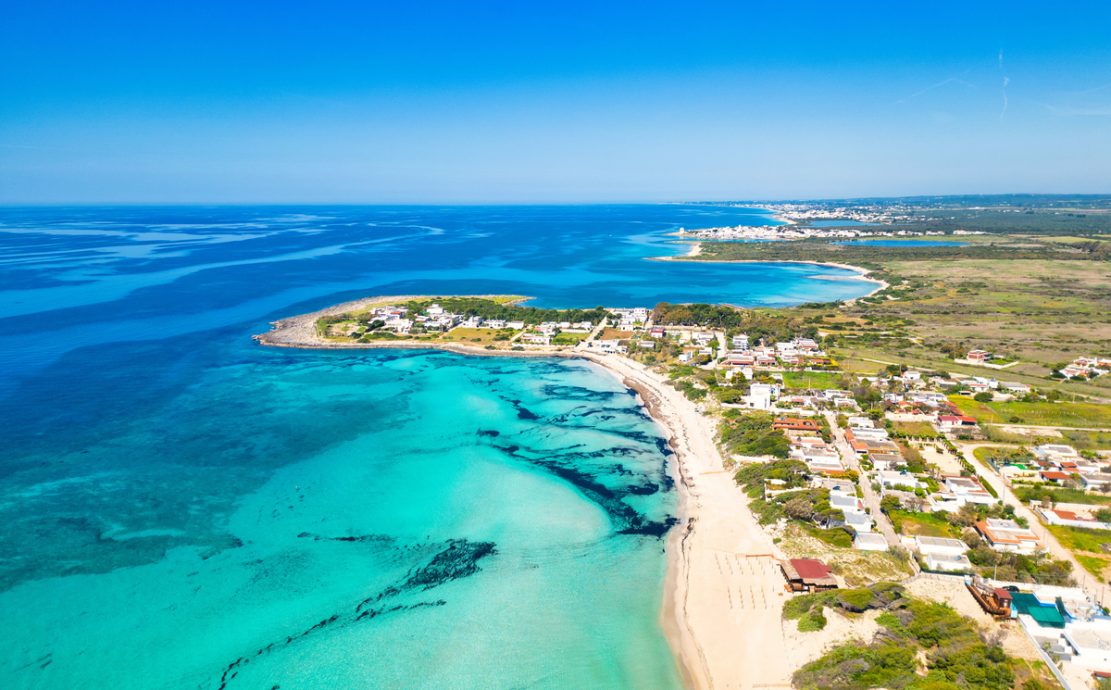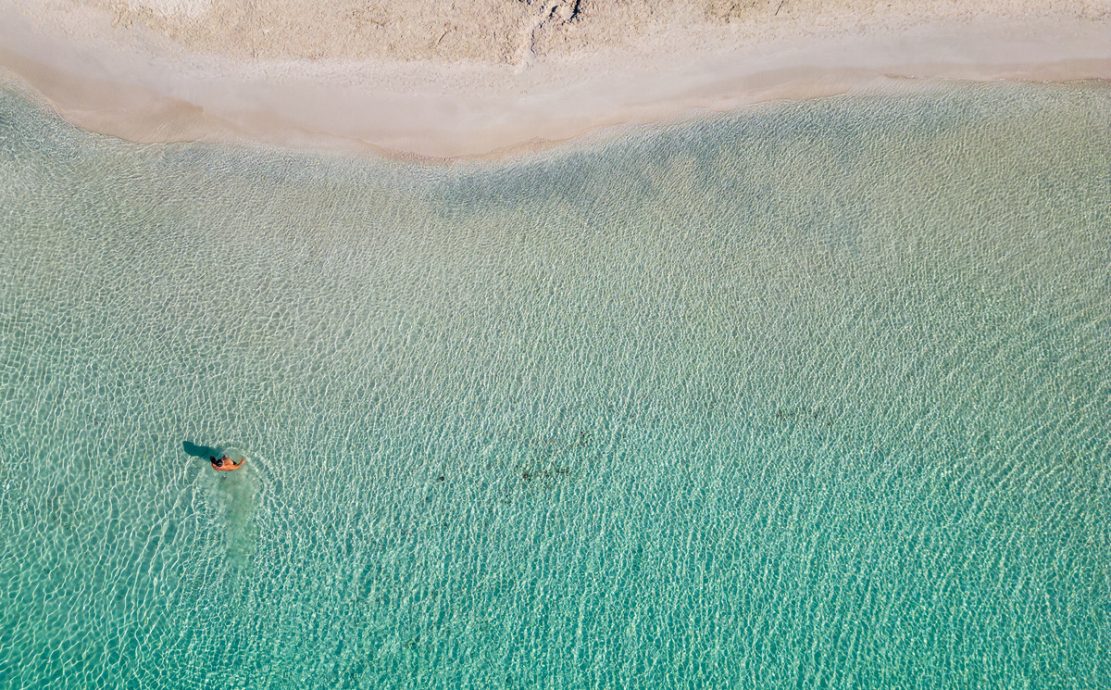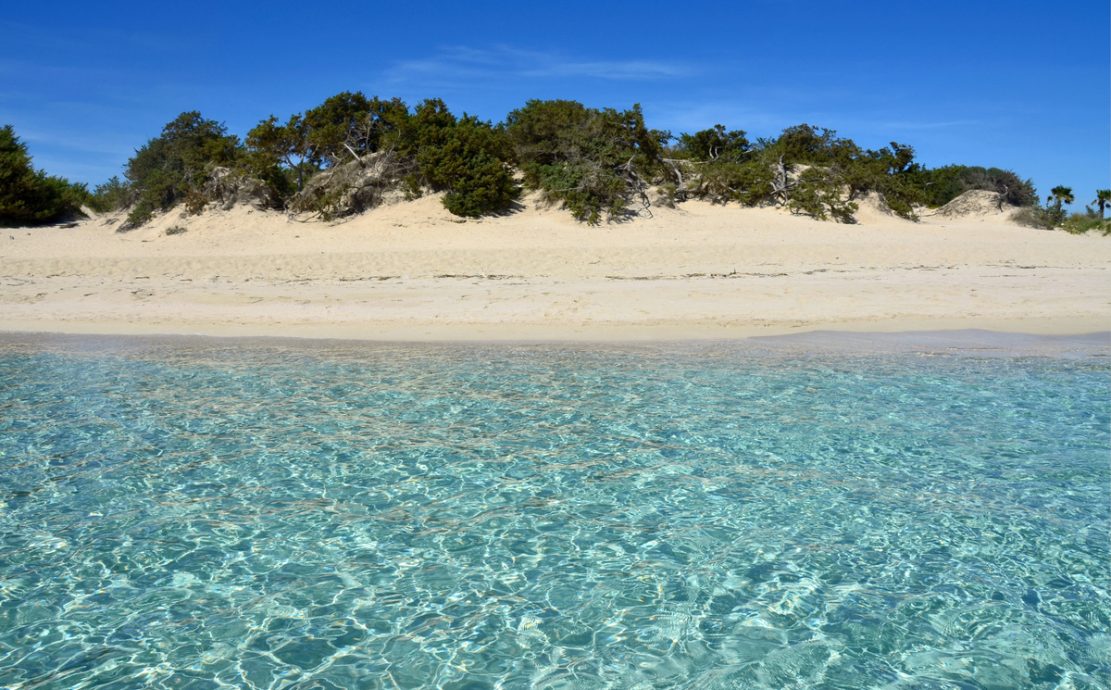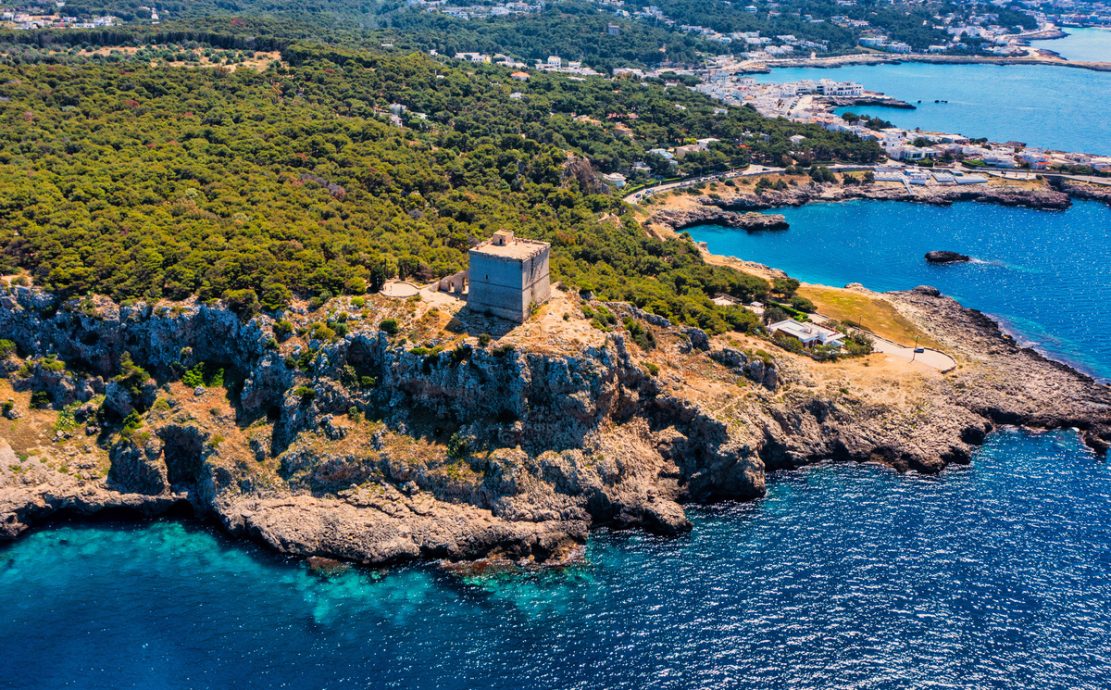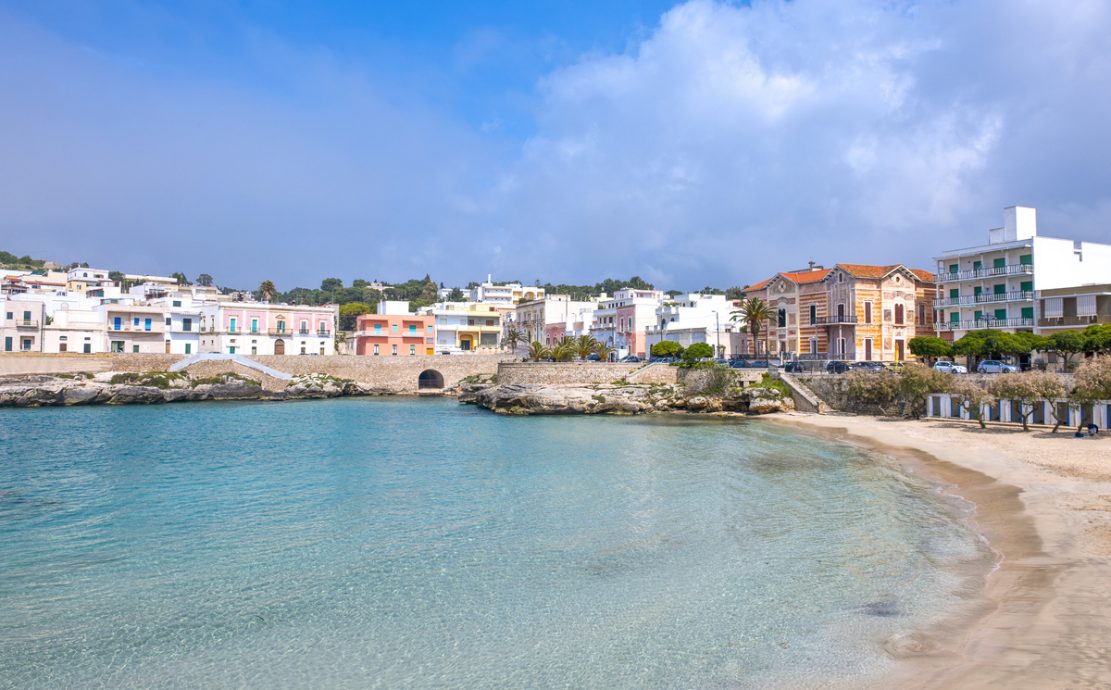Beaches and coves
For relaxation and fun by the sea
Relaxing holidays
Lecce is undoubtedly the iconic city of Salento, thanks to the Baroque style that embellishes many of its most iconic monuments. Although it does not directly overlook the sea, its inland location makes it an ideal starting point to reach some of the most beautiful beaches in Salento, which stretch along both the Adriatic and Ionian coasts. Just a few kilometres away are breathtaking views, crystal-clear waters and coastlines to suit every need, from wild rocky stretches to long stretches of golden sand.
The Beaches of the Adriatic Coast
San Cataldo
The closest beach to Lecce is San Cataldo, just 12 km from the city centre. This seaside resort, much frequented by the people of Lecce, offers a predominantly sandy coastline, lapped by turquoise waters and interspersed with rocky stretches ideal for snorkelling. The small harbour welcomes small boats of fishermen and tourists and is located near the suggestive octagonal lighthouse from the end of the 19th century, which now replaces Hadrian’s Port, an ancient harbour built by the Roman emperor Hadrian in the second century AD. Only a few stone blocks remain of the latter, a reminder of a glorious past. A lively market is held in San Cataldo every Sunday, and during the summer there is the traditional Sagra del Pane (Bread Festival), where the Salento puccia is the protagonist.
Torre Specchia
About 9 km from San Cataldo and 22 km from Lecce is Torre Specchia, one of Melendugno’s marinas, known for its 16th-century coastal tower built to defend the area from Saracen raids. The locality is characterised by a coastline that alternates tongues of rock with small, evocative sandy coves washed by a crystal-clear sea. The shallow and transparent seabed makes Torre Specchia a perfect place for snorkelling and diving: fish and sea urchins abound among the rocks. Behind the beaches stretch pine forests and Mediterranean maquis, creating a natural oasis scented with myrtle and aromatic herbs, ideal for relaxing walks.
Torre dell’Orso
27 km from Lecce, Torre dell’Orso is one of the most famous beaches in the Salento, with its unmistakable half-moon shape set between high cliffs and a blue sea that invites you to dive in. It is also known for the Grotta di San Cristoforo, which houses ancient rock paintings dating back to prehistoric times. The name of the locality has uncertain origins: it could derive from the cult of Saint Ursula, from the name of the Urso family who owned the land, or again, from a rock resembling the profile of a bear. Here are the famous faraglioni Le Due Sorelle, two rocks that, according to legend, represent two sisters turned to stone by the gods, eternally embraced.
Alimini
38 km from Lecce, the Alimini beach offers a 3 km-long stretch of sand alternating between free stretches and bathing establishments. It is popular with families, young people and fans of water sports such as surfing and kitesurfing, thanks to the constant wind that blows along the coast. Alimini’s uniqueness lies in its being surrounded by the Alimini Lakes, two natural basins, one salty and one sweet, connected by the ‘Lu Strittu’ canal, which was once part of the Via Traiana, an ancient Roman road. The lush vegetation surrounding the lakes and the beach makes this place a paradise for nature lovers.
Beaches on the Ionian coast
Punta Prosciutto
Punta Prosciutto, about 40 km from Lecce, is one of the most fascinating beaches in the Salento and, although it is the furthest away, it is worth every kilometre travelled. This wild beach, nestled in the Palude del Conte Nature Reserve, offers high sand dunes covered with Mediterranean maquis and transparent waters that fade from turquoise to sky blue. Much of the beach is free, perfect for those seeking direct contact with nature and tranquillity. In the past, the area was a marshy area, now largely reclaimed, but some stretches of marsh still survive, offering refuge to various species of migratory birds.
Porto Cesareo
About 30 km from Lecce, Porto Cesareo is one of the most renowned coastlines of the Ionian Sea. Its coastline stretches for over 17 km, alternating sandy beaches with low cliffs. The beauty of Porto Cesareo is also linked to the Protected Marine Area, where it is possible to dive to discover a very rich underwater life and prairies of Posidonia oceanica. Among the most famous beaches along this stretch of coast is the Spiaggia delle Dune, with fine sand and a shallow sea, perfect for families with children.
Santa Maria al Bagno and Santa Caterina
Continuing south, you come to the towns of Santa Maria al Bagno and Santa Caterina, both about 35 km from Lecce. These small fishing villages offer quiet coves and crystal-clear waters, ideal for those seeking a relaxing holiday away from the more crowded beaches. In Santa Maria al Bagno, don’t miss the Torre del Fiume, a 16th century coastal tower, while in Santa Caterina is the Porto Selvaggio Nature Reserve, a protected area with rocky coves and pine forests that plunge into the sea.



